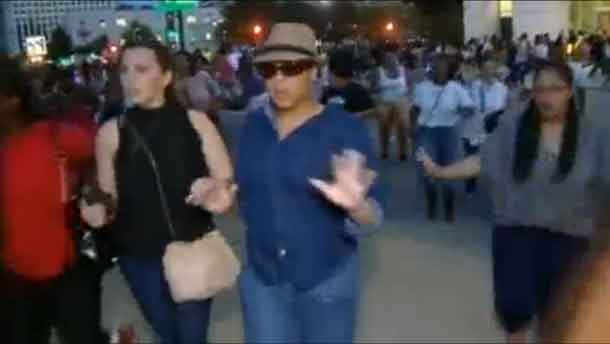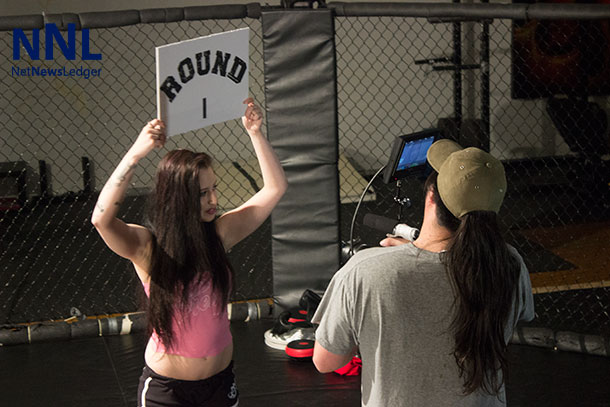

NEW YORK/WASHINGTON (Reuters) – A live, 10-minute video of the aftermath of a police officer shooting a black man in Minnesota was the latest example of the riveting power of video streaming and the complex ethical and policy issues it raises for Facebook Live and similar features.
The graphic video taken by the victim’s girlfriend, Diamond Reynolds, and broadcast on her Facebook <FB.O> page shows Philando Castile covered in blood in the driver’s seat of a car as the officer points a gun into the vehicle.
By Thursday evening, the footage had more than 4.4 million views and together with another police shooting in Baton Rouge, Louisiana, topped the items on Facebook’s “Newswire”, which promotes stories of broad interest.
“While I hope we never have to see another video like Diamond’s, it reminds us why coming together to build a more open and connected world is so important — and how far we still have to go,” said Facebook CEO Mark Zuckerberg on his account.
Facebook this year has made its Live feature, which allows anyone to broadcast a video directly from their smartphone, a central component of its growth strategy. Rivals Twitter <TWTR.N> and Alphabet’s <GOOGL.O> YouTube are also pushing live video as a new frontier in internet content.
While traditional TV broadcasters are subject to “decency” standards overseen by the Federal Communications Commission – and have a short delay in their broadcasts to allow them to cut away from violent or obscene images – internet streaming services have no such limitations.
That easy accessibility and openness are fostering a new type of intimate, personal broadcasting that proponents said can be extraordinarily powerful, as evidenced by the demonstrations that began shortly after the Minneapolis video.
But critics said the lack of regulation can allow a somewhat cynical exploitation of tragedy.
Facebook and others can “rush forward and do whatever they think will get them clicks and users” without concerns for potential legal consequences, said Mary Anne Franks, a law professor at the University of Miami who helps run the Cyber Civil Rights Initiative. She would like companies to do more to prevent dissemination of such content and advocates on behalf of victims of revenge porn – when sexually explicit images or video are distributed without consent.
Indeed, internet companies enjoy broad protections under federal law for content users posting on their services. Merely hosting third-party content that is objectionable or even illegal does not expose those companies to litigation as long as they adopt reasonable takedown policies.
The companies do enforce their own terms of service, which restrict many types of images. They rely heavily on users to report violations, which are then reviewed by employees or contractors for possible removal.
POLITICAL PRESSURE
Rabbi Abraham Cooper, head of the Los Angeles-based nonprofit Simon Wiesenthal Center’s Digital Terrorism and Hate project, said live video provides unprecedented opportunity to seize public awareness and cultivate political pressure on a topic such as police brutality.
But Cooper said the technology also raises concerns. “The availability of a live broadcast, unencumbered, becomes a horrendous tool in the hands of a terrorist.”
Facebook said last month it was expanding the team dedicated to reviewing live content and staffing it 24 hours a day. The company would also test the monitoring of broadcasts that go viral or are trending even before they are reported, giving Facebook a way to stop offending broadcasts quickly, just as a TV network might do.
In Wednesday night’s shooting in Falcon Heights, a suburb of St. Paul, Minnesota, the footage was taken offline for about an hour, leading to outrage on social media. It was then restored with a warning labelling it as “disturbing.”
“We’re very sorry that the video was temporarily inaccessible,” a Facebook spokeswoman said in a statement. “It was down due to a technical glitch and restored as soon as we were able to investigate.”
Details of the technical glitch were not immediately known.
Facebook’s push into live streaming assures that such violent or otherwise disturbing events would not be the last.
About 1.65 billion people used Facebook monthly as of March 31, spending at least 50 minutes per day on the social media platform. In Facebook’s most recent quarterly earnings, it reported a 50 percent surge in revenue, handily beating Wall Street expectations as its promotion of live video won new advertisers and encouraged existing ones to increase spending.
Facebook pays some companies, including Reuters, to produce content for Facebook Live.
The Minnesota shooting followed other violent events that were streamed live on the internet and went viral.
Just last month, a 28-year-old Chicago man, Antonio Perkins, filmed himself on Facebook Live spending time with his friends outside when shots rang out. The graphic video showed Perkins falling to the ground and what appears to be blood on the grass.
Days earlier, there was a double homicide in France in which the killer later took to Facebook Live to encourage more violence in a 12-minute clip.
In April, an 18-year-old woman was charged after she live streamed her friend’s rape on Twitter’s <TWTR.N> Periscope. In May, a young woman in France recorded herself on Periscope as she threw herself under a train.
(Additional reporting by Amy Tennery, Lawrence Hurley and Yasmeen Abutaleb; Editing by Grant McCool and Andrew Hay)





